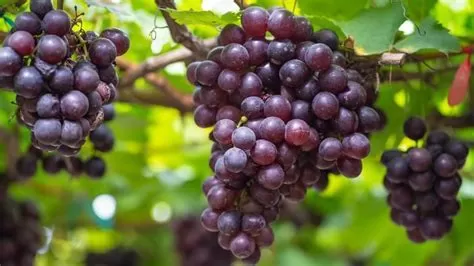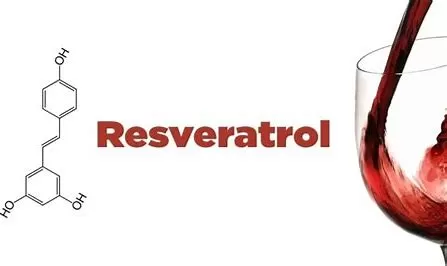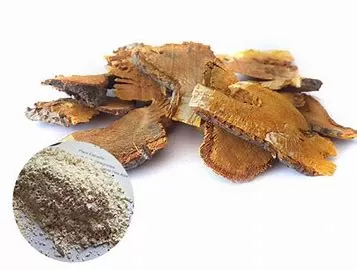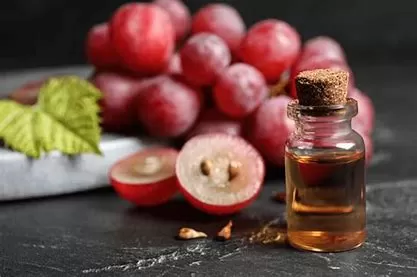- 0086-571-85302990
- sales@greenskybio.com
The Presence of Resveratrol in Apples: Facts and Implications
2025-03-24
Resveratrol, a naturally occurring polyphenol, has captured the interest of both researchers and health enthusiasts due to its potential health benefits, including antioxidant properties, cardiovascular protection, and anti-aging effects. Predominantly found in red wine, grapes, and certain berries, resveratrol's distribution across other fruits, such as apples, raises questions about its presence and impact on diet and health. This article examines the presence of resveratrol in apples, the implications of its levels if present, and the broader context of resveratrol in dietary practices.
Understanding Resveratrol
1. The Nature of Resveratrol:
Resveratrol is a stilbenoid, a type of polyphenolic compound that serves protective functions in plants, particularly in response to stress or damage. Its presence in certain fruits and nuts has been associated with benefits ranging from anti-inflammatory effects to cardioprotective attributes.
2. Health Benefits:
Research has highlighted resveratrol's role in supporting cardiovascular health, cancer prevention, and neuroprotection, as well as its potential to influence longevity through mechanisms related to cellular health and integrity.
Resveratrol in Common Sources
1. Primary Sources:
Resveratrol is most abundant in the skins of grapes and products derived from them, such as red wine, where levels are elevated due to fermentation processes. It is also found in smaller concentrations in berries like blueberries and cranberries and in foods such as peanuts.
2. Other Sources:
Beyond grapes and berries, resveratrol has been detected in small amounts in other plant sources, sparking inquiries into its presence in widely consumed fruits like apples.
Investigating Apples and Resveratrol Content
1. The Composition of Apples:
Apples are rich in polyphenols, though they are primarily constituted of flavonoids and phenolic acids. Key compounds include Quercetin and catechins, which contribute to antioxidant and anti-inflammatory effects.
2. Resveratrol Presence:
Current evidence suggests that apples do not contain significant levels of resveratrol. Studies focusing on polyphenol content in apples do not identify resveratrol as a notable component, spotlighting instead the aforementioned compounds like Quercetin.
3. Reasons for Absence:
The disparity in resveratrol content between apples and other fruits like grapes may relate to ecological and evolutionary factors dictating polyphenolic distributions in plants. Specifically, resveratrol's role in defense against fungal infections is more pertinent in species like grapevines.
Implications of Resveratrol in Diet
1. Dietary Choices:
Understanding the concentration of resveratrol across food sources shapes dietary decisions for those seeking its benefits. While apples may not be significant resveratrol sources, their wealth in other beneficial compounds supports overall health through mechanisms like anti-inflammatory action and oxidative stress reduction.
2. Supplementation and Variety:
For individuals aiming to increase resveratrol intake, inclusion of grapes, berries, and other rich sources can complement diets accompanied by other nutraceuticals. Resveratrol supplements are also investigated for their potential in optimizing intake, though professional guidance is recommended.
3. Health Strategy:
A broader health strategy that emphasizes variety, integrating multiple polyphenolic sources alongside apples, ensures a comprehensive nutrient profile and maximizes health benefits without reliance on a single compound.
Expanding Polyphenol Understanding
1. Beyond Resveratrol:
Exploration of apples highlights the diversity within polyphenols and their distinct roles in health. The benefits offered by apple polyphenols, including Quercetin, underscore the value in polyphenolic diversity across diets.
2. Integrating Polyphenols for Health:
A balanced approach, acknowledging diversity in polyphenol compositions and emphasizing whole food consumption, reinforces health-promoting strategies and enriches dietary experiences.
Conclusion
The investigation into apples and resveratrol reveals a lack of significant presence within the fruit, steering attention toward other polyphenolic components that contribute to its health improving qualities. While apples may not fulfill resveratrol-centric health objectives, integrating a variety of polyphenolic sources within diets supports comprehensive nutritional strategies. Resveratrol-rich foods, alongside apples, provide diverse pathways toward benefitting from antioxidant protection and enhanced well-being. For those pursuing targeted polyphenol intake, informed dietary choices coupled with potential supplementation pave the way for optimizing health outcomes through effective nutrition practices.
- ▶ Hesperidin
- ▶ citrus bioflavonoids
- ▶ plant extract
- ▶ lycopene
- ▶ Diosmin
- ▶ Grape seed extract
- ▶ Sea buckthorn Juice Powder
- ▶ Beetroot powder
- ▶ Hops Extract
- ▶ Artichoke Extract
- ▶ Reishi mushroom extract
- ▶ Astaxanthin
- ▶ Green Tea Extract
- ▶ Curcumin Extract
- ▶ Horse Chestnut Extract
- ▶ Other Problems
- ▶ Boswellia Serrata Extract
- ▶ Resveratrol Extract
- ▶ Marigold Extract
- ▶ Grape Leaf Extract
- ▶ blog3
- ▶ blog4
- ▶ blog5
-
What fruit is highest in resveratrol?
2025-03-24
-
Is resveratrol safe for kidneys?
2025-03-24
-
Is It Okay to Take Resveratrol Every Day?
2025-03-24
-
What is resveratrol used for in skin?
2025-03-24
-
What Are the Sources of Resveratrol?
2025-03-24
-
What Is Resveratrol Extract Good For?
2025-03-24
-
Passionflower Extract
2025-03-24
-
Mulberry Extract
2025-03-24
-
Gynostemma pentaphyllum extract
2025-03-24
-
Chasteberry Extract
2025-03-24
-
Tormentil Extract
2025-03-24
-
Beta Carotene
2025-03-24
-
Baicalin
2025-03-24
-
Troxerutin
2025-03-24
-
Motherwort Extract
2025-03-24
-
Curcumin Extract
2025-03-24

























